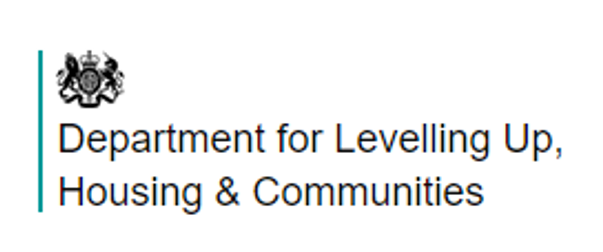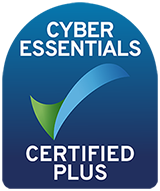 The Ghost of Christmas Future left us with a compendium of festive reading. Weighing roughly the same as Scrooge’s prize turkey, the Regulator of Social Housing’s (RSH) consultation on the Tenant Satisfaction Measures (TSMs) has more than a few bones to chew over.
The Ghost of Christmas Future left us with a compendium of festive reading. Weighing roughly the same as Scrooge’s prize turkey, the Regulator of Social Housing’s (RSH) consultation on the Tenant Satisfaction Measures (TSMs) has more than a few bones to chew over.
Acuity will respond formally to the RSH. Meanwhile we’ve set out initial observations below. In Part 1 we cover overarching principles. In Part 2, we will get stuck into the individual measures.
We’re keen to hear your thoughts too so that we may reflect them in our formal response in a non-attributable way. And don’t forget, we have a one-hour webinar with the RSH on 27 January to take a closer look at the detail of the consultation, seek clarification and enable you to feedback your thoughts. Book your place here >>
Do remember that the consultation is just that – proposals, not a done deal.
Keeping a sense of proportion
The RSH is keen to maintain its commitment to risk-based, proportionate co-regulation. However, there is no avoiding the fact that the RSH’s planned expansion into proactive consumer regulation will be more burdensome. As far as the TSMs are concerned, this means all landlords (large and small) will have to report annually to their tenants 22 measures that adhere to specified definitions and survey methodology. As well as requiring data systems to be set up, those landlords with limited surveying skills will need to brush up. Clearly, Acuity can help you here.
Assurance systems will also need to be enhanced so that board members have confidence in the data. The RSH already takes a dim view of dodgy data and reflects it in the governance judgments of larger landlords.
The good news for smaller landlords is that the RSH will take a lighter touch approach with those owning fewer than 1,000 ‘relevant homes ’. As ‘relevant homes’ includes low-cost homeownership, a quick calculation should enable you to check whether you will be required to report as a larger landlord. And note this is about ownership – publication of the metrics aims to make landlords accountable whether they use a managing agent or not.
The approach for smaller landlords includes not having to additionally report the measures to the regulator – you would just report them to tenants. On the basis that you would still have to go through the process of gathering and signing off the data, it might seem odd to tenants of smaller landlords that performance information useful to them won’t make it to whatever public comparison tool the RSH develops in a few years’ time.
Acuity knows that the vast majority of its benchmarking members haven’t got a transparency hang-up. So, for those that want it, we plan on collecting the TSMs when they go live in 2023-24 and we’ll develop a tool that will enable you to report a summary of your results, as compared to others, on your website and as a PDF printout. And, for the super keen, we could also dummy run the metrics after the RSH issues its finalised set this summer. We’ll be discussing this at forthcoming benchmarking club meetings.
Other examples of flexibility for smaller landlords include:
- only required to undertake a perception survey every two years instead of annually
- recognising the difficulty in achieving conventional levels of statistical accuracy, smaller landlords are free to conduct census surveys (ie invite all tenants to participate)
- a minority of landlords with ‘funny’ year ends aren’t obliged to stick to the 1 April – 31 March reporting format
- where publication of certain measures might compromise the anonymity of tenants, ie because there are so few cases, it is permissible to omit them from the published data
Also, those with fewer than 1,000 rented homes and fewer than 1,000 low-cost ownership can choose to either calculate and report perception measures separately or combined
Stop bugging me: survey fatigue
Tenants having comprehensive and timely data to hold their landlords to account is a good thing. But practicality might collide with principle. 12 of the 22 metrics are gathered via a tenant survey. The number of questions and frequency of surveys has the capacity to irritate and tire tenants which could impact the results. It also limits the opportunity to ask other bespoke questions you might want to include in a survey to determine tenant preferences and identify areas for improvement. But what’s the alternative?: more reliance on non-survey based metrics and/or let the planned consumer inspections take the strain?
Wot no VFM?: reestablishing the link between tenants & VFM
The TSMs aim to tell us something about landlord performance across the consumer experience. This represents 50% of the VFM equation. In other words, it tells us something about the ‘value’ of the landlord’s offer but not the ’money’. The Social Housing White Paper imagined financial measures would sit alongside the TSMs so that tenants could ‘weigh up’ VFM. As the RSH is only consulting on TSMs, we shouldn’t expect to find these financial metrics in the proposals, but arguably, there is a gap to be filled here as the RSH eats an elephant over the next three years or so.
This is important because the long-standing principle whereby the primary stakeholder – tenants – are able to make a judgement about their landlord’s use of resources in the context of performance, was diminished by Shapps & Pickle’s (then Housing Minister and Secretary of State) overhaul of regulation in 2012. The word ‘tenant’ was dropped from the VFM standard and VFM accountability became somewhat technical, less visible to tenants and bundled into economic regulation. The VFM metrics associated with this change seem to reflect the Tory obsession with homeownership and associated pressure on social landlords to develop. Consequently, they tell us about landlord capacity rather than a balanced snapshot of VFM across landlord activity. Given the thrust of the White Paper, this now looks somewhat anachronistic.
So, at some point in the future, a more balanced approach to VFM and associated metrics needs to be considered. It also begs the question, where does this leave the voluntary Sector Scorecard? If we end up with a balanced set of mandatory TSMs and VFM metrics, the Sector Scorecard is redundant. And this might come sooner rather than later if landlords opt to dummy run the TSMs once they are finalised later this year.
Watch out for Part 2 where we will explore the TSM suite.






Comments are closed.